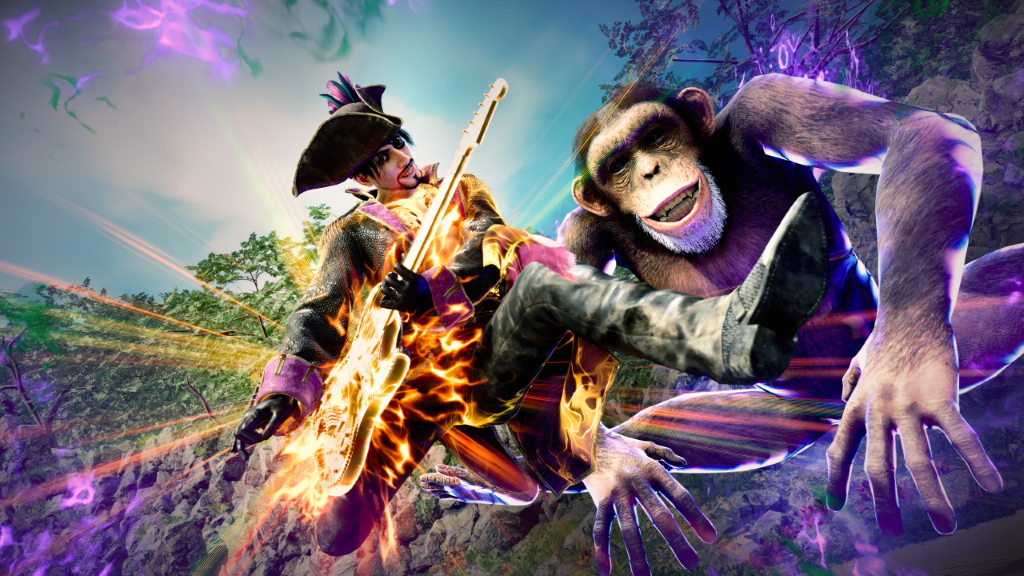TechRadar Verdict
Don’t be put off by its absurd name or ridiculous premise; Like a Dragon: Pirate Yakuza in Hawaii provides a sincere and heartfelt adventure that successfully marries the series’ penchant for engaging power struggles with high-octane swashbuckling action. For existing fans, it’s a superb follow-up to Infinite Wealth. And for newcomers, it’s an excellent onboarding experience thanks to its myriad of fun and accessible gameplay systems.
Pros
- +
Tons of variety for a relatively compact experience
- +
Majima’s combat styles are a joy to play
- +
Building up your crew and reputation is immensely fulfilling
- +
Optional treasure hunts had me turning Honolulu upside down
Cons
- -
Navigating the seas can be a slog at times…
- -
…and it’s the only place where performance dips
- -
Like other games in the series, it’s a bit of a slow starter
Why you can trust TechRadar
Platform reviewed: PS5
Available on: PS5, PS4, Xbox Series X|S, Xbox One, PC
Release date: February 21, 2025
Like a Dragon: Pirate Yakuza in Hawaii is a game that I’m stunned even exists. In the AAA gaming space, it’s so rare to see a franchise just let loose with a genuinely absurd premise. Yet with action-adventure game Pirate Yakuza in Hawaii, developer Ryu Ga Gotoku Studio pulls it off with such unabashed confidence that you really just have to respect it.
And still upon reflection, it’s a premise that manages to make perfect sense for protagonist Goro Majima. For the most unhinged of the series’ legendary yakuza - a guy who’s previously had success running a cabaret club and a construction company - taking up the mantle of a pirate captain and sailing the high seas in search of lost treasure is something he’d probably do in a heartbeat. With or without the amnesia he’s struck with at the start of this game.
It’s a concept that elevates Pirate Yakuza in Hawaii from any old spinoff to a truly memorable adventure and one that absolutely stands out confidently against the backdrop of the long-running series. It’s still a Like a Dragon title through and through - with an abundance of minigames, side quests, and a massive open hub to explore - but the backdrop of piracy and treasure hunting makes Pirate Yakuza in Hawaii one of a kind.
Setting the stage
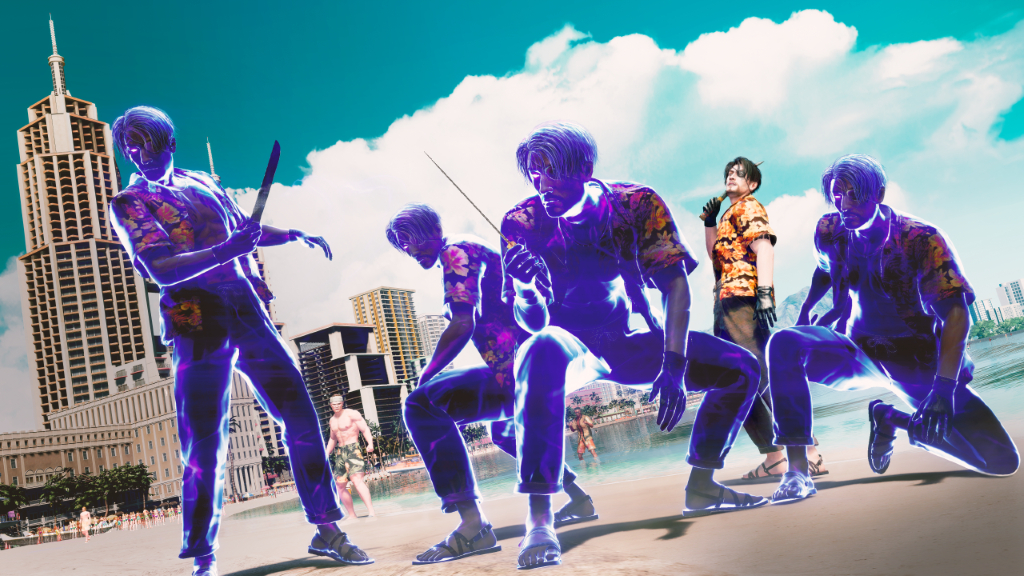
Six months on from the events of Like a Dragon: Infinite Wealth, we find Majima washed up on the beach of a remote island off the coast of Hawaii. Near death and with little in the way of memories to his name, he’s mercifully saved by a child named Luke, who lives on the island with his dad and older sister.
Over the course of the first chapter, Majima repays Luke’s kindness by helping the island deal with a rather major pirate problem. And we’re talking pirates in the strictest sense: galleons outfitted with powerful cannons and menacing sails, staffed by salty treasure-hungry sea dogs. It turns out the whole thing is quite the racket in the waters surrounding Hawaii (in the Like a Dragon universe at least).
After a stint doing errands on the island, it’s not too long before Majima gets a pirate ship - the Goromaru - and a ragtag crew of his own. And so properly begins an adventure that successfully weds a Treasure Island-esque narrative with Like a Dragon’s political and faction-based intrigue. While it’s not as big on throwing you wild curveballs as the mainline series, it’s a tale that’s nonetheless entertaining and thrilling from start to finish, with an absolutely phenomenal finale to boot.
White whale, holy grail
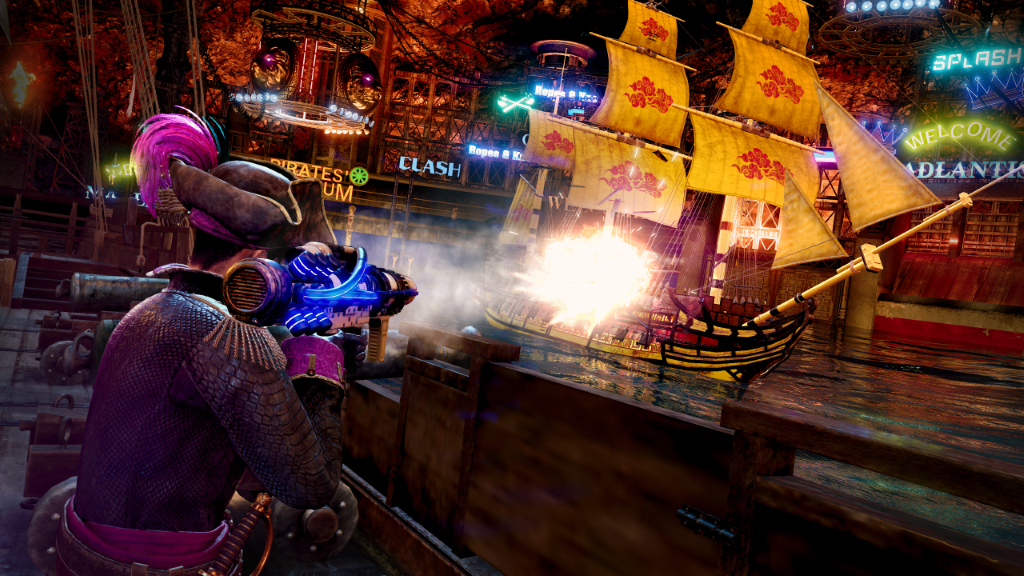
Gameplay and exploration in Like a Dragon: Pirate Yakuza in Hawaii is split into two distinct segments, those being land and sea. When you’re ashore, it’s perhaps unsurprisingly like most other Like a Dragon titles; Majima gets to fully explore the city of Honolulu (returning from Infinite Wealth) and engage in all kinds of minigames, side stories, and combat.
Sign up for breaking news, reviews, opinion, top tech deals, and more.
As in prior entries, clueless goons are more than keen to make a beeline for Majima should they spot him out and about, which is where his two distinct combat styles come into play. I’ve covered them extensively in my previews beforehand, but what you need to know is that the Mad Dog and Sea Dog styles offer incredibly unique ways to engage your foes.
Mad Dog is closer to the Majima you expect. Wielding his iconic knife, he employs rapid attacks, a powerful gap closer, throws, and more. It’s ideal for whittling down a single target or a small squad of baddies. Sea Dog is the more interesting of the two, as Majima dons his pirate garb, wields two cutlasses, and has access to a flintlock pistol and a hook. It’s much better suited to the larger-scale fights you’ll have during story missions and deck battles.
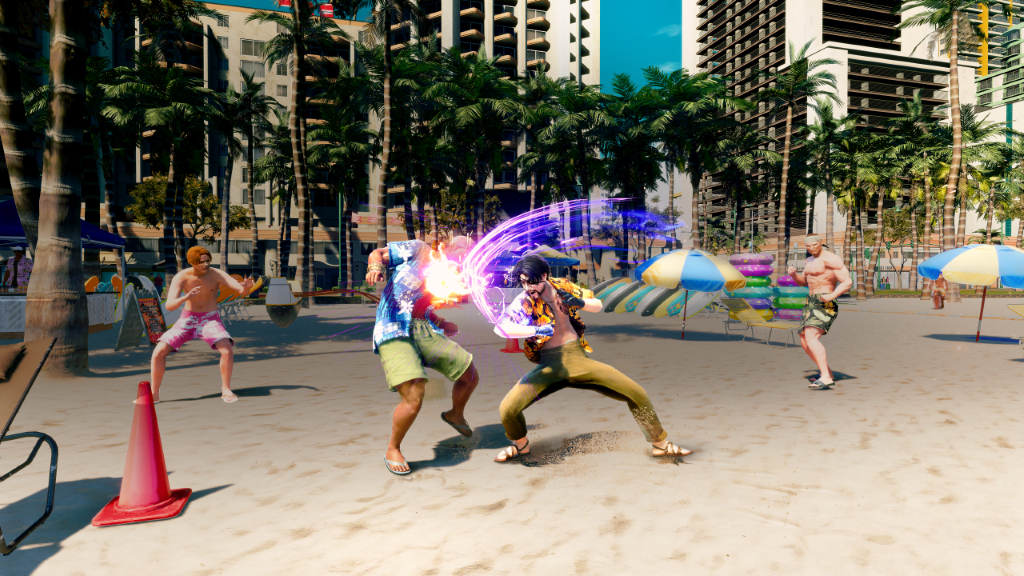
It’s hard to single out any one aspect of Like a Dragon: Pirate Yakuza in Hawaii as its absolute best bit, but the sheer variety of content on offer is undoubtedly a swashbuckler’s dream. Even better, you can take it all at your own pace. Want to tick off some substories or chill with some minigames? Or do you want to take things up a notch by sinking some lily-livered sailors in the Pirates’ Coliseum? Outside of major story beats, it’s all available to you at any time.
Overall, Majima feels exceptionally powerful here, to the point where the Normal difficulty setting was honestly quite a breeze. Throw in some hilariously strong Heat Actions, Mad Dog’s Doppelganger mode, and Sea Dog’s Dark Instruments (both available via the chargeable Madness Gauge) and we have what is certainly among the most overpowered move sets in series history.
But by Davy Jones is Majima such a joy to play as. Whether it’s blasting away entire scores of lads with a charged flintlock shot or wreaking havoc with a giant ethereal chimpanzee (no, really), combat rarely feels like a drag. Enemies aren’t necessarily pushovers though, with some types wielding spears or shields to counter specific abilities.
However, as powerful as Majima feels, you’ll still need to play smart. That’s especially so when you chase after Honolulu’s bounty targets - a piece of side content that provides plenty of cash with which you can use to invest in upgrades for Majima and his ship.
Those spear guys can poke you out of the air, for example, while shielded foes will need to be robbed of their protection with the hook before significant damage can be dealt. And that’s before we’ve even gotten to kickboxers, gunners, tigers, bears, and enemies that drop a grenade on defeat. Believe it or not, they’re actually worse than the tigers and bears.
Waterworld
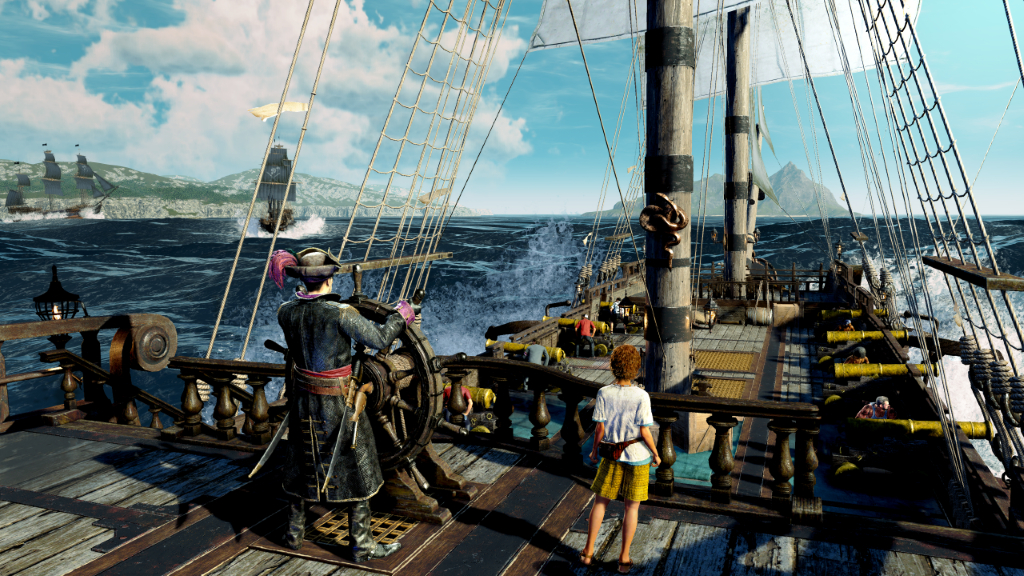
Majima’s as much a terror out at sea, if not more so. Captaining the Goromaru is the other half of Like a Dragon: Pirate Yakuza in Hawaii, and it’s unlike anything we’ve seen from the series yet. Well, perhaps besides the vehicle combat of Fist of the North Star: Lost Paradise, but that’s obviously even more of a spinoff than this game is.
There’s a ton to do out on the high seas, with exploring the vast waters surrounding Hawaii and other notable locales forming a good chunk of the playthrough. You can engage in ship battles, explore uncharted islands for lost treasure, and even undertake a massive side story that has Majima and crew taking down the Devil Flags - a notorious pirate armada.
One thing to note is that content with the Goromaru is noticeably harder than anything else in the game. Enemy ships can pack a punch, especially those of higher ranks. So, you’ll need to do some groundwork in order to make your ship as powerful as possible. That’ll come in the form of scouting new crew members you can find dotted around Honolulu, as well as upgrading the ship’s durability and firepower.
Your shipmates will also level up when they’re staffed on the ship, and certain members can provide unique First Mate or Squad Leader buffs if they’ve been assigned to those positions. Such buffs include increasing damage you deal to an enemy ship’s stern, or increasing the number of times you can shoot out a smokescreen to obscure enemy vision while you resuscitate downed crewmates or put out hazards like fires or poison mist.
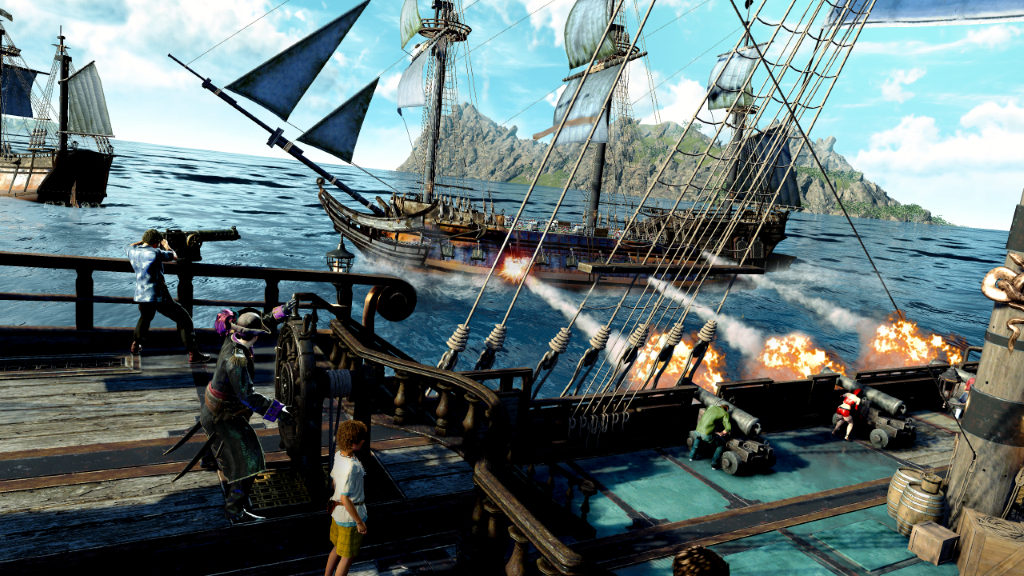
You’ll also be able to take your crew into the Madlantis Pirates’ Coliseum, a substantial bit of side content where you’ll engage in ship battles of escalating difficulty. Defeating the enemy ship will then transition you to a deck battle, where your entire crew faces off against the enemy’s on their own ship. It’s a genuine thrill to see so many characters clash against each other in combat like this, and while it can get quite messy and nonsensical, it’s still great chaotic fun.
Manning the Goromaru is a part of the game that I found to be the most engrossing. Ticking off content and participating in minigames to unlock new crew members always feels fulfilling, and definitely incentivizes you to try out activities like Dragon Kart, Crazy Delivery, and the usual smattering of side activities to unlock even more goodies.
There are a few stubborn barnacles to deal with out on the ocean, though. Engagements with enemy ships can get quite lengthy later on in the game, which does add to overall sea travel time. And while the Goromaru can boost and make use of air currents to sail swiftly, the simple act of traveling from A to B can still take a good chunk of time. Especially when you’re constantly running into other fleets.
The sea is also the only place in the game where you’ll experience notable performance drops (at least I did on the PS5 review version I tested), especially when inclement weather such as rain storms get involved. It’s nothing horrible or unplayable, but definitely worth noting if you’re playing on console.
Should I play Like a Dragon: Pirate Yakuza in Hawaii?
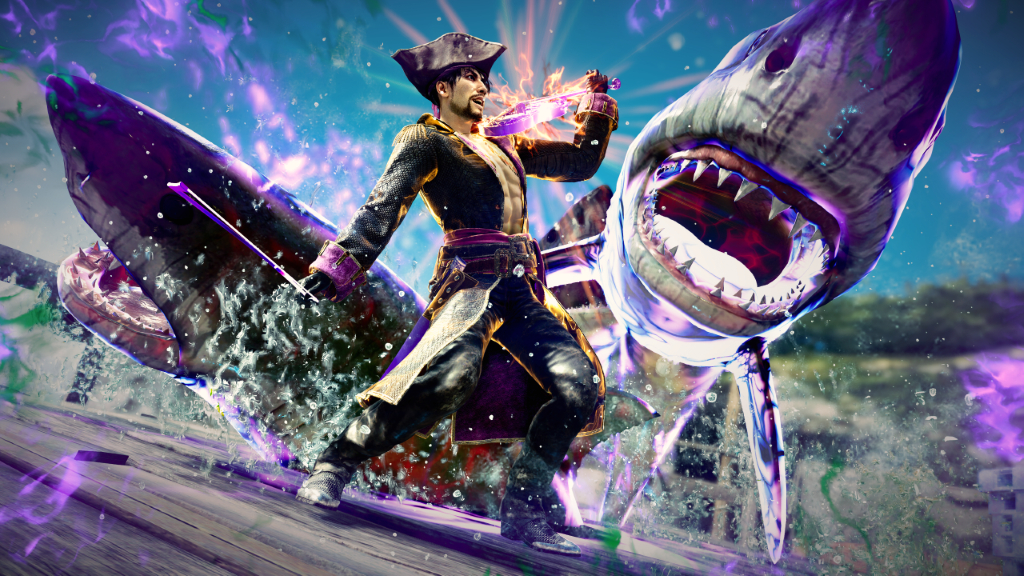
Play it if...
You want a compact Like a Dragon adventure
Similar to Like a Dragon Gaiden: The Man Who Erased His Name before it, Pirate Yakuza in Hawaii’s run time is shorter than the length of its name, making for a much more digestible experience.
You love pirates
It really is as simple as that. If you’re pining for a swashbuckling adventure the likes of which we seldom see in video games, Pirate Yakuza in Hawaii will scratch that itch and then some.
Don't play it if...
You’re not caught up on the series
While the game is generally friendlier to newcomers than others, it does still mention and feature characters and events from prior entries, and spoils major story beats from Infinite Wealth, so play at your own risk if you’re still making your way through the wider series.
Accessibility
The accessibility options in Pirate Yakuza in Hawaii are something of a treasure trove, too, with plenty on offer to accommodate gamers of all stripes.
Some highlights include options for automatic quick time events, stick control swapping, reducing the motion of waves out at sea, thorough subtitle options (including backgrounds and character names), and three distinct color vision assistance settings (deuteranopia, protanopia, and tritanopia). Full button configuration is also supported.
How I reviewed Like a Dragon: Pirate Yakuza in Hawaii
My full playthrough of Like a Dragon: Pirate Yakuza in Hawaii took 25 hours to finish on PS5, playing on an LG CX OLED TV with the DualSense Wireless Controller.
While I finished the main story, the Goro Pirates side story, and tackled the majority of available side content, this was by no means a completionist run. If you’re going for 100% - that’s fully completing all side content including the exhaustive challenge list - expect to sink in anywhere between 30-40 hours.
First reviewed February 2025

Rhys is TRG's Hardware Editor, and has been part of the TechRadar team for over four years. Particularly passionate about high-quality third-party controllers and headsets, Rhys strives to provide easy-to-read, informative coverage on gaming hardware of all kinds. As for the games themselves, Rhys is especially keen on fighting and racing games, as well as soulslikes and RPGs.
You must confirm your public display name before commenting
Please logout and then login again, you will then be prompted to enter your display name.
